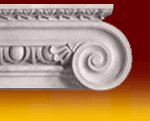|
Enter content here
| Standards
in History for Grades 5-12
| | Era 1
Three Worlds Meet (Beginnings to 1620) | Standard 1: Comparative characteristics
of societies in the Americas, Western Europe, and Western Africa that increasingly interacted after 1450 Standard 2: How early European
exploration and colonization resulted in cultural and ecological interactions among previously unconnected peoples
|
| Era 2
Colonization and Settlement (1585-1763) |
Standard 1: Why the Americas
attracted Europeans, why they brought enslaved Africans to their colonies, and how Europeans struggled for control of
North America and the Caribbean
Standard 2: How political, religious, and social institutions emerged in the English colonies Standard 3:How the values and institutions
of European economic life took root in the colonies, and how slavery reshaped European and African life in the America
|
| Era 3
Revolution and the New Nation (1754-1820s) |
Standard 1: The causes of the American
Revolution, the ideas and interests involved in forging the revolutionary movement, and the reasons for the American
victory Standard 2: The impact of the American
Revolution on politics, economy, and society
Standard 3: The institutions and
practices of government created during the Revolution and how they were revised between 1787 and 1815 to create the
foundation of the American political system based on the U.S. Constitution and the Bill of Rights | |
Era 4
Expansion and Reform (1801-1861) | Standard 1: United States territorial expansion between 1801 and 1861, and how it affected relations with external powers
and Native Americans Standard 2: How the industrial
revolution, increasing immigration, the rapid expansion of slavery, and the westward movement changed the lives of
Americans and led toward regional tensions
Standard 3: The extension, restriction,
and reorganization of political democracy after 1800
Standard 4: The sources and character
of cultural, religious, and social reform movements in the antebellum period
| | Era 5
Civil War and Reconstruction (1850-1877) |
Standard 1: The causes of the Civil
War Standard 2: The course and character
of the Civil War and its effects on the American people
Standard 3: How various reconstruction
plans succeeded or failed
| | Era 6
The Development of the Industrial United States (1870-1900) |
Standard 1: How the rise of corporations,
heavy industry, and mechanized farming transformed the American people
Standard 2: Massive immigration
after 1870 and how new social patterns, conflicts, and ideas of national unity developed amid growing cultural diversity
Standard 3: The rise of the American
labor movement and how political issues reflected social and economic changes
Standard 4: Federal Indian policy
and United States foreign policy after the Civil War
| | Era 7
Era 7 The Emergence of Modern America (1890-1930) |
Standard 1: How Progressives and
others addressed problems of industrial capitalism, urbanization, and political corruption Standard 2: The changing role of
the United States in world affairs through World War I
Standard 3: How the United
States changed from the end of World War I to the eve of the Great Depression
| | Era 8
Era 8 The Great Depression and World War II (1929-1945) |
Standard 1: The causes of the Great
Depression and how it affected American society
Standard 2: How the New Deal addressed
the Great Depression, transformed American federalism, and initiated the welfare state Standard 3: The causes and course
of World War II, the character of the war at home and abroad, and its reshaping of the U.S. role in world affairs | | Era 9
Era 9 Postwar United States (1945 to early 1970s) |
Standard 1: The economic boom and
social transformation of postwar United States
Standard 2: How the Cold War and
conflicts in Korea and Vietnam influenced domestic and international politics
Standard 3: Domestic policies after
World War II Standard 4: The struggle for racial
and gender equality and the extension of civil liberties
| | Era 10
Era 10 Contemporary United States (1968 to the present) |
Standard 1: Recent developments
in foreign and domestic politics
Standard 2: Economic, social, and
cultural developments in contemporary United States
|
|
|
 |
|

